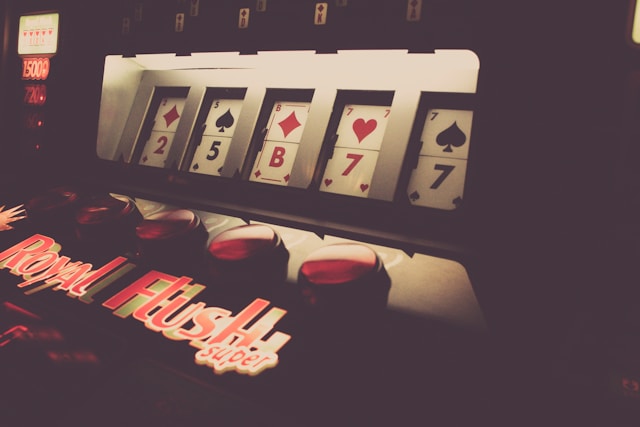Bluffing in the Age of AI: Using Modern Tools to Enhance Your Poker Mindset
Poker has always been a game of strategy, psychology, and calculated risk. Among its many aspects, bluffing is one of the most intriguing and challenging skills. A well-timed bluff can turn a losing hand into a winning one, while a poorly executed bluff can be costly. Today, artificial intelligence (AI) is reshaping how players approach bluffing, offering tools and insights that enhance both strategy and mindset. By combining data-driven analysis with human intuition, players can refine their skills and elevate their overall game.
Understanding Bluffing in a Modern Context
Traditionally, successful bluffing relied heavily on reading opponents’ physical tells, understanding their tendencies, and sensing the right moment to act. In live poker, subtle cues—like posture, eye movements, and nervous habits—could provide valuable information. Online poker, however, removes most of these visual cues, forcing players to rely on betting patterns, timing, and probability.
Modern AI tools bridge this gap. They analyze millions of hands to identify optimal bluffing scenarios, helping players understand when to act and when to fold. Additionally, observing broader patterns in gaming behavior can strengthen strategic instincts. For example, exploring trends and playing on other online gambling platforms, such as the best slot sites for winning in the UK, can reveal how players approach risk-taking and probability. While slots and poker are different games, the underlying psychology of evaluating risk and reward is transferable, because recognising these patterns helps a poker player develop sharper instincts for when to bluff and when to hold back.
Leveraging AI Tools for Strategic Advantage
AI-driven poker tools allow players to study past hands, evaluate opponent tendencies, and refine their approach. Advanced solvers calculate optimal bluff frequencies based on pot size, stack depth, and player behavior. By combining this statistical foundation with psychological analysis, players can identify moments when opponents are most likely to fold, allowing more confident bluffs even in high-stakes games.
AI can also help players understand their own habits. Many players have predictable patterns or timing tells that can be subtly revealed through analysis. By identifying these tendencies, a player can adjust their strategy to become less predictable and more difficult to read. Over time, the combination of AI insights and personal reflection fosters more disciplined, strategic decision-making.
Adapting to the Evolving Online Poker Landscape
Online poker is more competitive than ever, with players worldwide leveraging data-driven strategies. AI platforms often include practice modes that simulate realistic scenarios, allowing players to experiment with bluffs in a low-pressure environment. These simulations build mental resilience, improve timing, and help players understand the nuances of both aggressive and conservative bluffing.
Understanding probability, timing, and behavioral patterns has become crucial for consistent success. AI tools allow players to refine these skills in a controlled environment before applying them to actual games. This preparation helps reduce costly errors and boosts confidence when making bold plays.
The Psychology Behind AI-Assisted Bluffing
Bluffing is as much about psychology as probability. AI tools reinforce confidence by highlighting situations where a bluff is statistically advantageous. At the same time, they encourage self-awareness by helping players recognize patterns in their own play, such as timing mistakes or overreliance on certain strategies. This insight allows players to maintain an unpredictable style, which is essential for successful deception.
By combining analytical feedback with mental discipline, players can make more informed decisions while remaining flexible in their approach. AI does not replace intuition; rather, it complements it, offering a structured framework that enhances natural instincts at the table.
Preparing for the Future of Poker
AI is already capable of outperforming most human players in poker, thanks to its ability to process enormous amounts of data, calculate probabilities, and predict opponent behavior with precision. As these tools become more advanced, they will continue to dominate in analytical decision-making and optimal strategy execution. This reflects the wider conversation around AI vs human intelligence, where machines thrive in logic-heavy domains but humans still bring unique advantages.
However, human players who learn to integrate AI insights while preserving creativity, adaptability, and unpredictability can still carve out an edge. While AI may excel at calculation and pattern recognition, the artistry, intuition, and psychological nuance of human play remain irreplaceable—especially in situations where reading opponents and managing subtle deception are key.
Enhancing Your Poker Mindset
Mastering bluffing in the age of AI requires blending analytical insight with instinctive intuition. By using AI tools responsibly, observing patterns across related gaming platforms, and practicing disciplined decision-making, players can elevate both strategy and confidence. Bluffing remains a delicate art, but AI equips modern players with the knowledge and foresight needed to thrive in an increasingly competitive online poker environment.
Ultimately, success lies in integrating technology with human judgment. Players who leverage AI without losing the creative, adaptive elements of human play are best positioned to turn calculated risks into consistent victories.

